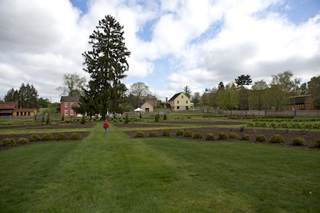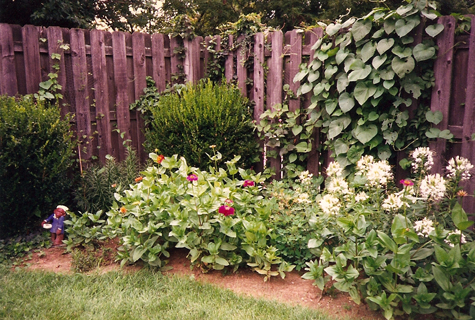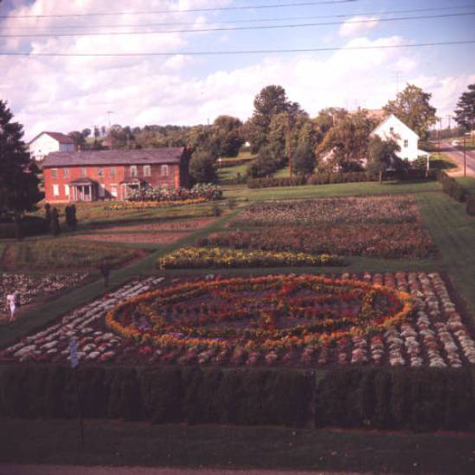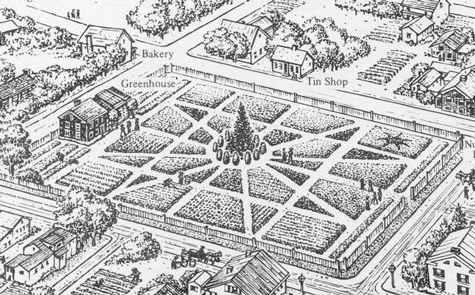Human Flower Project
Secular Customs
Sunday, July 01, 2012
A Gentle Correction
About 10 days ago, we cited a New York Times article explaining why Burma’s human rights leader wears flowers in her hair. She kindly corrected us both, us all.

Aung San Suu Kyi pinned a supporter’s flowers in her hair on the day she was released from house arrest.
While visiting France in late June, Burmese human rights leader Aung San Suu Kyi, who recently had accepted her Nobel Peace Prize, remarked on the customary flowers in her hair. The New York Times had reported that she wore them in memory of her late father, who would put flowers in her hair. HFP seized on this information and passed it along.
But Aung San Suu Kyi corrected that notion recently while visiting France.
“You see, I was only two when my father died,” she said. “And at that time, I had no hair! In Burma we believed if you shaved children’s hair, it grows back thick and long. And my hair was always shaved, so it’s only a myth that he placed flowers there… but I’m very touched people think he did.
“The reason why I wear flowers in my hair is actually because my mother used to do so. This was very much a Burmese tradition. But these days Burmese girls have started cutting their hair short so they no longer wear flowers. And on top of it, they don’t know how or have great difficulty doing it. Even my personal assistant—who has short hair—doesn’t know how to help me.”
Wednesday, June 27, 2012
Conceptual Gardening
With design, aesthetics and ecological concerns leading the way, symbolism isn’t much of a force in contemporary gardening. But we offer two examples where concept dominates, one noble, the other daffy.

The Zoar garden with its symbolic spruce at the center.
Our first stab at a garden, on High St. in Lexington, Kentucky, was as conceptually ambitious as it was horticulturally shaky. (Aesthetics/design? What are those?)
In a squarish back yard surrounded by a high (inherited) fence, we planned an astrological garden, sectioning the perimeter into 12 beds and designating each to a zodiacal sign, Aries to the East, Cancer to the North, Libra toward the West, and Capricorn on the South. Then we went about finding plants and objects that corresponded to each sign.
Windflowers? In Gemini of course. Zinnias for Leo. A vine of moonflowers under Cancer, etc. At a flea market we came upon a very strange plaster statue: a monkey in a blue nurse’s uniform holding a bedpan. Perfect for Virgo!
The astrological garden on High St., Lexington, KY: Leo zinnias and Virgo orderly.
Photo: Human Flower Project
On the evening of the summer solstice, 1997, we invited about thirty friends over and had them stand around the edges of the yard at their proper astrological stations, and beginning with Mimi Pickering (born closest to the spring equinox and thus the “firstborn” of the zodiacal year), each guest announced his or her birthdate as well as a “fairy name.”
After we’d all come full around the year, ending with Edward Roberts, born March 17, we planted a redbud tree in the center of the yard, watered by Nina McCormack and Marty Newell, the two Aquarians present.
This very contrived endeavor came to mind recently as we read about a far more serious conceptual garden at the Village of Zoar, Ohio, a town of German Separatists that, some claim, had the first communal society of any European immigrants to the U.S.
The Village of Zoar was named this year as one of the most endangered historical places by the National Trust for Historic Preservation. The entire town—including its garden—may be flooded if the Army Corps of Engineers decides not to rebuild a crumbling levee on the Tuscarawas River.

Zoar Garden circa 1960
Photo: Columbus Dispatch
The original settlers came to the U.S. in 1817 to escape religious persecution in their homeland. As a reflection of both their faith and their belief in a communal society, the villagers constructed in the center of town a large garden, designed after the book of Revelation, Chapter 21.
James Griffing, a 19th century visitor, wrote: “In the center of the garden stood a Norway spruce representing everlasting life, and around the tree was an arbor vitae hedge symbolizing heaven; This in turn was surrounded by twelve juniper trees; one for each of the apostles… A circular walk enclosed the centrum, and from this twelve other walks representing various paths to heaven radiated to the four sides of the garden. These in turn were intersected by walks which symbolized the worldly ways through which people wander on earth before they find salvation.”
How enlightened to recognize that many paths lead to heaven.

Drawing of the Zoar Garden with its radiating path and central spruce, representing Christ.
A more contemporary and horticulturally-minded historian writes, “Although some vegetables and fruits were grown here, the garden was filled mainly with flowers.” Is there a plant list anywhere? We haven’t found one, but as a former “conceptual gardener” (though a pagan one), we feel certain that as with our Gemini windflowers, the plants the Zoar gardeners chose symbolized some tie to their aspiration and greater design – the New Jerusalem.
Gardening & Landscape • Religious Rituals • Secular Customs • Permalink
Saturday, May 26, 2012
Her Honor for a Potato Crop
Should a community garden director be free to hawk her Olympic torch?

Route of the Olympic Torch, May 26, 2012
Image: London Olympics 2012
Sarah Milner Simonds was honored by the Olympic committee to carry the Olympic torch along part of its route to the 2012 summer games. Simonds, a 38-year-old horticulturist, was chosen for her work with People’s Plot, “a community allotment in South Acton [West of London], where we can grow our own fruit and vegetables, cook and eat the food we grow together.”
But before Simonds ever trotted her segment of the Olympic relay, her honor was besmirched: she had tried to sell her torch on ebay.
According to the New York Times, the winning bidder offered 153,100 pounds, ($242,323) last Sunday, meanwhile drawing down the fury many observers – though the unnamed buyer has yet to pay up.
Simonds defended her position, saying she intended to plow all proceeds from the sale back into People’s Plot: “There are still lots of people who feel strongly that these iconic torches are somehow sacred and that trading demeans their value,” Simonds said. “To these I would ask how exactly can we plant our potatoes using a torch? They obviously didn’t understand my motives.”
Several other torchbearers likewise have tried or are now trying to sell their Olympic flame-carriers, and most of them too have designated specific charities as beneficiaries.
Are honorifics transferable commodities? There are plenty of Olympic medals up for sale on ebay right now. Does it matter that Simonds didn’t win her torch, rather that it was conferred upon her by the Olympic committee? Since she didn’t have to toss a shot put farthest or run fastest for it, does that make the object any less hers to do with as she pleases, or more so? Do her charitable motives make a difference?
The American Academy of Motion Pictures Sciences confronted the problem back in 1950, after a trade in Oscars has begun. In 1950 the Academy began binding winners to an agreement banning them or their heirs “from selling their Oscars to anyone but the Academy for the nominal sum of $1.”
Academy Awards made prior to 1950 are exempt. Michael Jackson bought the 1939 Best Picture Oscar, awarded to “Gone with the Wind,” for $1.54 million in 1999. Other less renowned statuettes, all awarded pre-1950, have sold at auction too.
Friday, May 04, 2012
Hold onto the Moment
Silver trophies are a cinch, but what if your moment of triumph is crowned with flowers? A Danville, Kentucky, florist has a high-tech solution.

Jockey John Velazquez and 2011 Derby winner Animal Kingdom wearing his wreath of roses.
Photo: WDTN
Tomorrow they’ll run the 138th Kentucky Derby in Louisville with great fanfare and millions of dollars on the line (but let’s hope, not the life of a thoroughbred racehorse as in 2008).
Called “the greatest two minutes in sports,” the Derby in Louisville now stretches to more than two weeks of festivity, and for breeders and trainers, preparing a three-year-old for the event can involve a lifetime of experience, investment and, of course luck.
No wonder winners want to hang onto the wreath of roses, the floral mantle every Derby winner gets to wear after the race.
Greg Kocher of the Lexington Herald-Leader wrote a good feature article on Molly’s Flowers and Things, a Danville flower shop that has been freeze drying floral trophies and other mementos for nearly 20 years. Her first client from the world of racing was W.T. Young. The owner of Overbrook Farm outside Lexington had Molly Jacobus “preserve the white carnations that Tabasco Cat took at the Belmont Stakes.” Two years later, when his horse Grindstone won the Derby, Young hired Molly to preserve the wreath of roses. Many of the winning owners since have done the same.

